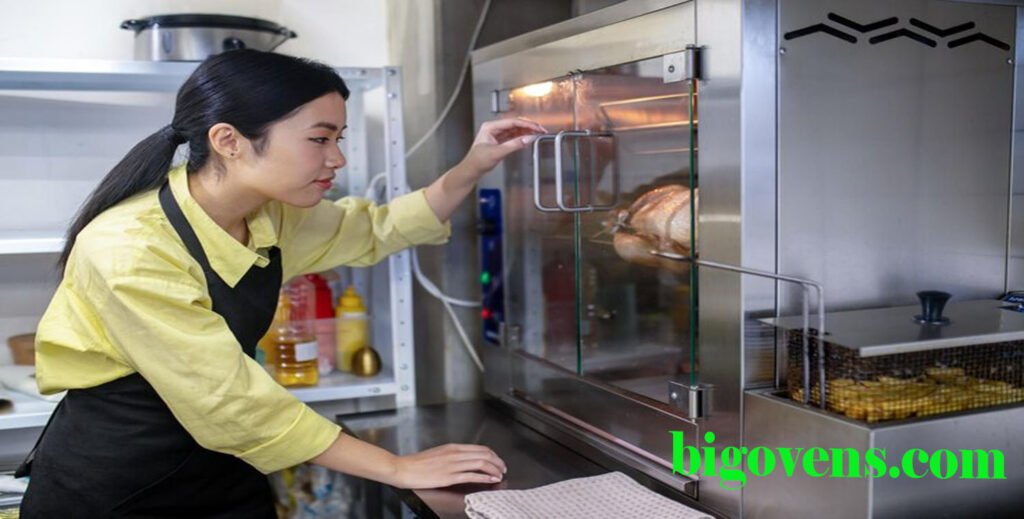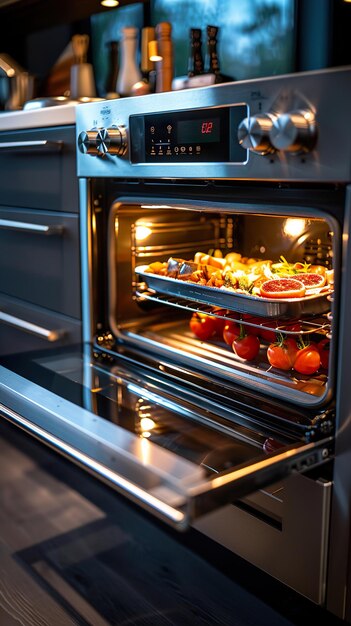The Evolution and Importance of Ovens in Modern Cooking

The history of ovens dates back to ancient civilizations. The earliest ovens were simple clay structures used by the Egyptians around 3000 BC.
Ovens have been an integral part of cooking for centuries, evolving from simple clay structures to sophisticated appliances that are essential in kitchens around the world. They play a crucial role in food preparation, offering a variety of cooking methods that enhance flavors, textures, and overall culinary experiences. This article will explore the history, types, features, and benefits of ovens, as well as tips for choosing the right oven for your cooking needs.
A Brief History of Ovens

The history of ovens dates back to ancient civilizations. The earliest ovens were simple clay structures used by the Egyptians around 3000 BC. These early ovens were primarily used for baking bread, a staple food in many cultures. As civilizations advanced, so did the design and functionality of ovens.
Ancient Ovens
- Roman Ovens: The Romans improved upon earlier designs by creating brick ovens that could reach higher temperatures. They used these ovens for baking bread and cooking meats, and they even developed the concept of the “thermopolium,” a type of fast-food establishment that featured ovens for cooking and serving food.
- Medieval Ovens: During the Middle Ages, ovens became more common in households. Large, wood-fired ovens were built into the walls of homes, allowing families to bake bread and cook meals. These ovens were often communal, serving entire neighborhoods.
The Industrial Revolution
The Industrial Revolution in the 18th and 19th centuries brought significant advancements in oven technology. Cast iron stoves became popular, allowing for more precise temperature control and multiple cooking surfaces. The introduction of gas ovens in the late 19th century revolutionized home cooking, providing a cleaner and more efficient alternative to wood and coal.
Modern Ovens
Today, ovens come in various forms, including electric, gas, convection, and microwave ovens. They are equipped with advanced features such as digital controls, self-cleaning options, and smart technology that allows for remote operation. The evolution of ovens has made cooking more accessible and enjoyable for home cooks and professional chefs alike.
Types of Ovens
When it comes to choosing an oven, there are several types to consider, each with its unique features and benefits:
1. Conventional Ovens
Conventional ovens are the most common type found in homes. They use either gas or electricity to generate heat and typically have a single cooking compartment. Conventional ovens are versatile and can be used for baking, roasting, and broiling.
2. Convection Ovens
Convection ovens are similar to conventional ovens but are equipped with a fan that circulates hot air throughout the cooking chamber. This feature allows for more even cooking and faster cooking times. Convection ovens are ideal for baking cookies, roasting meats, and cooking casseroles.
3. Wall Ovens
Wall ovens are built into the wall of a kitchen, saving space and providing a sleek, modern look. They come in various sizes and can be either single or double ovens. Wall ovens are popular among those who want to maintain a clean kitchen design while enjoying the benefits of a full-sized oven.
4. Range Ovens
Range ovens are part of a cooking range that includes both an oven and a cooktop. They are available in gas, electric, and dual-fuel options. Range ovens are popular in home kitchens due to their versatility and the convenience of having both cooking surfaces in one appliance.
5. Microwave Ovens
Microwave ovens use electromagnetic radiation to heat food quickly. While they are not traditional ovens, they are an essential kitchen appliance for reheating, defrosting, and cooking certain foods. Many modern kitchens feature a combination microwave and convection oven for added versatility.
6. Steam Ovens
Steam ovens use steam to cook food, preserving moisture and nutrients. They are ideal for cooking vegetables, fish, and grains, providing a healthier cooking option. Steam ovens can be used alone or in combination with traditional ovens for enhanced cooking capabilities.
7. Pizza Ovens
Specialized pizza ovens are designed to reach high temperatures quickly, making them perfect for cooking pizzas. These ovens can be wood-fired, gas, or electric and are popular among pizza enthusiasts and restaurants.
Features to Consider When Choosing an Oven
When selecting an oven, several features can enhance your cooking experience:
1. Size and Capacity
Consider the size of your kitchen and the amount of cooking you typically do. Ovens come in various sizes, from compact models suitable for small kitchens to larger models that can accommodate multiple dishes at once. Ensure that the oven you choose fits your cooking needs and available space.
2. Cooking Modes
Look for ovens that offer multiple cooking modes, such as baking, broiling, roasting, and convection. Some ovens also have specialized modes for specific dishes, such as pizza or bread baking.
3. Temperature Control
Accurate temperature control is essential for successful cooking. Choose an oven with a reliable thermostat and easy-to-use temperature settings. Some modern ovens come with smart technology that allows for precise temperature adjustments and monitoring through mobile apps.
4. Self-Cleaning Options
Self-cleaning ovens can save time and effort in maintaining your appliance. These ovens use high temperatures to burn off food residue, making it easier to keep the interior clean. There are also steam-cleaning options that use moisture to loosen grime.
5. Energy Efficiency
Energy-efficient ovens can help reduce utility bills and environmental impact. Look for models with energy-saving features, such as better insulation and efficient heating elements. Some ovens also have eco-friendly modes that minimize energy consumption.
6. Safety Features
Safety is a crucial consideration, especially in households with children. Look for ovens with features such as cool-touch doors, automatic shut-off, and child locks to prevent accidents.
7. Smart Technology
Smart ovens can connect to your home Wi-Fi network, allowing you to control them remotely via smartphone apps. Features may include preheating the oven, adjusting cooking times, and receiving notifications when your food is ready.
Benefits of Using Ovens
Ovens offer numerous benefits that enhance the cooking experience:
1. Versatility
Ovens can be used for a wide range of cooking methods, including baking, roasting, broiling, and even dehydrating. This versatility allows home cooks to experiment with various recipes and techniques.
2. Consistent Results
Ovens provide even heat distribution, which is essential for achieving consistent cooking results. This is particularly important for baking, where precise temperatures can make a significant difference in the final product.
3. Healthier Cooking Options
Ovens allow for healthier cooking methods, such as roasting and baking, which require less oil compared to frying. Steam ovens, in particular, preserve nutrients and moisture in food, making them a great choice for health-conscious cooks.
4. Enhanced Flavor
Cooking in an oven can enhance the flavors of food through caramelization and browning. Roasting vegetables, for example, brings out their natural sweetness and adds depth to their flavor.
5. Batch Cooking
Ovens provide ample space for cooking multiple dishes at once, making them ideal for batch cooking or preparing meals for large gatherings. This can save time and effort in meal preparation.
6. Convenience
Modern ovens come with features that make cooking more convenient, such as timers, programmable settings, and easy-to-clean surfaces. These features can simplify the cooking process and allow for multitasking in the kitchen.
Tips for Maintaining Your Oven
To ensure your oven remains in good working condition, consider the following maintenance tips:
1. Regular Cleaning
Keep your oven clean by wiping down spills and splatters after each use. For deeper cleaning, follow the manufacturer’s instructions for self-cleaning or use appropriate cleaning products.
2. Check Seals and Gaskets
Inspect the door seals and gaskets regularly to ensure they are intact. Damaged seals can lead to heat loss and inefficient cooking.
3. Calibrate Temperature Settings
If you notice inconsistent cooking results, consider calibrating your oven’s temperature settings. Use an oven thermometer to check the accuracy of the temperature and adjust as needed.
4. Avoid Overcrowding
When cooking multiple dishes, avoid overcrowding the oven, as this can impede airflow and lead to uneven cooking. Use multiple racks if necessary, but ensure there is enough space for air circulation.
5. Schedule Professional Maintenance
Consider scheduling professional maintenance for your oven every few years to ensure it operates efficiently. A technician can check for any issues and perform necessary repairs.



